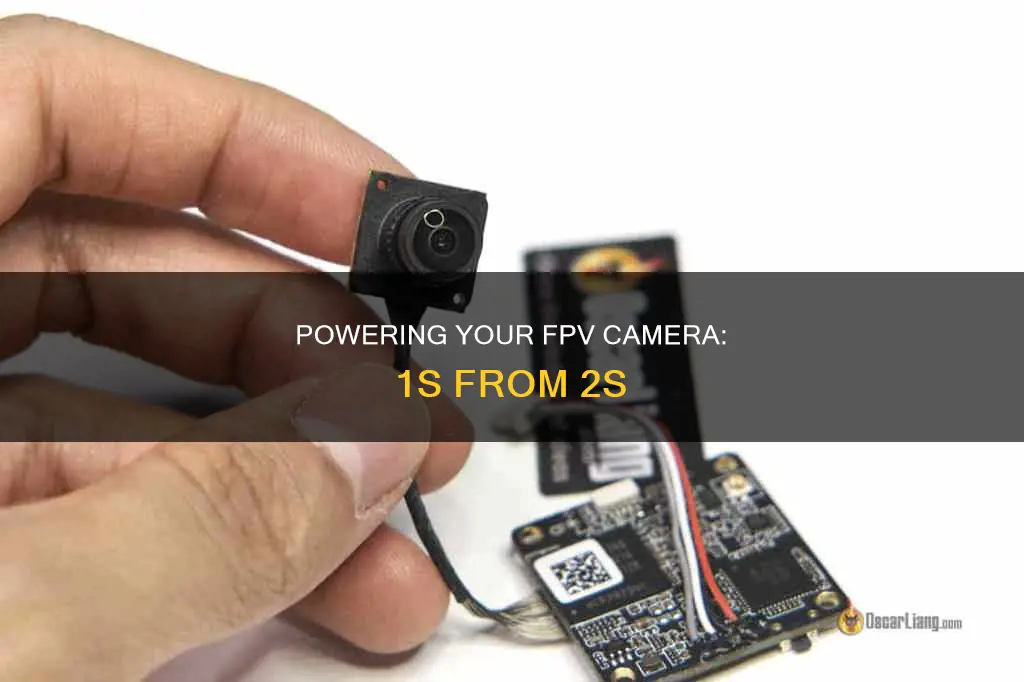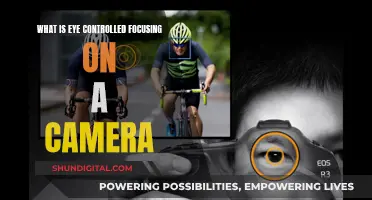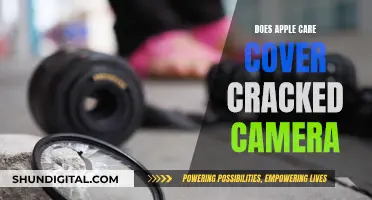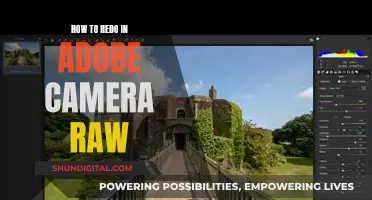
FPV (First Person View) drones use batteries to fly and operate cameras. The most common type of battery used in FPV drones is the lithium polymer (LiPo) battery. These batteries consist of individual cells, each with a nominal voltage of 3.7V, and a safe operating voltage range of 3.0V to 4.2V. The number of cells in a LiPo battery is indicated by its 'S' rating, e.g. a 6S battery has six cells and a nominal voltage of 22.2V (6 x 3.7V).
When powering an FPV camera, it is important to use a stable power source to ensure a clean image transmission. Directly powering a camera from a LiPo battery is possible but not recommended due to the fluctuating power conditions caused by ESCs and motors. This can result in electrical noise that interferes with the FPV video feed. Instead, it is best to power the FPV camera from the VTX (video transmitter) as most VTXs have a filtered 5V output dedicated for powering FPV cameras. If this is not possible, the next best option is to power both the VTX and camera from the same filtered and regulated power source.
To power an FPV camera directly from a battery, it is important to first ascertain the camera's operating voltage range. Most FPV cameras have a wide operating voltage range, often from 5V to 30V or higher. It is crucial not to exceed the camera's specified voltage range as this can damage the camera. Additionally, the battery's voltage and capacity should be considered to ensure it can provide sufficient power for the desired flight time.
When connecting the FPV camera to the power source, it is important to twist the video signal and ground wires together. This acts as a shield against induced external noise from ESCs and BEC inductors. It is also recommended to keep the VTX signal and power wires away from any BEC inductors. Proper grounding is essential, and it is best to connect the grounds of the VTX and FPV camera to the same pin or to two ground pins as close to each other as possible.
| Characteristics | Values |
|---|---|
| Cells | FPV batteries consist of cells. Most FPV batteries use lithium polymer (LiPo) cells. |
| Voltage | The battery's total voltage depends on the number of cells. For example, a 4S battery has four cells and 14.8 volts (4 x 3.7V). |
| Capacity | We measure the capacity of a battery in milliampere-hours (mAh). This tells you how much energy the battery can store. Higher capacity means longer flight time. |
| C Rating | The C rating shows how quickly a battery can discharge. A higher C rating means the battery can provide more power quickly, which is suitable for fast and powerful drones. |
| Connectors | XT60, XT30, Dean T-Plug, EC3/EC5 |
| Weight | Heavier batteries can reduce maneuverability and speed. |
| Size and Shape | Make sure the battery fits your drone's battery compartment. |
| Safety | Overcharge protection, short circuit protection, temperature monitoring |
What You'll Learn
- Powering FPV cameras directly from LiPo batteries can be noisy
- It is best practice to connect the grounds of your VTX and FPV camera to the same pin
- FPV camera and VTX should be powered by the same filtered and regulated power source
- FPV batteries are crucial for the performance and flight time of your drone
- FPV battery safety: overcharge protection, short circuit protection, and temperature monitoring

Powering FPV cameras directly from LiPo batteries can be noisy
The best way to power your FPV camera is from the VTX. Many VTXs these days have a filtered 5V output dedicated to powering FPV cameras. Even if you are already using a filtered power source for your VTX, it is still recommended to use the filtered output from the VTX for the camera, as any additional filtering is beneficial.
If you can't power the FPV camera directly from the VTX for any reason, the next best thing is to power both the VTX and camera from the same filtered and regulated power source. Most noise-related issues are caused by powering either the FPV camera or VTX, or both, directly from the main LiPo battery.
LiPo batteries are an incredible power source for FPV drones, providing a substantial amount of energy storage and delivery capabilities. However, if not handled correctly, they can pose safety risks.
Charging Your 360 Fly Camera: A Quick Guide
You may want to see also

It is best practice to connect the grounds of your VTX and FPV camera to the same pin
This is why it's best practice to connect the grounds of your VTX and FPV camera to the same pin, or to two ground pins as close to each other as possible.
Night Owl Camera Batteries: How Long Do They Last?
You may want to see also

FPV camera and VTX should be powered by the same filtered and regulated power source
When it comes to powering your FPV camera and VTX, it is best to power them from the same filtered and regulated power source. This is because most noise-related issues are caused by powering either the FPV camera or VTX, or both, directly from the main LiPo battery. The constant fluctuating power conditions that are brought about by the ESCs and motors make the raw voltage from a LiPo battery noisy. This noise can pass through the PDB or flight controller to your VTX and FPV camera, subsequently manifesting as interference in your FPV goggles.
The safest way to power your FPV camera is from the VTX. Many VTXs these days have a filtered 5V output dedicated to powering FPV cameras. Even if you are already using a filtered power source for your VTX, it is still recommended to use the filtered output from the VTX for the camera, as any additional filtering is beneficial.
If, for any reason, you can't power the FPV camera directly from the VTX, the next best thing is to power both the VTX and camera from the same filtered and regulated power source.
If you are getting "white lines" in your video, try fixing your FPV setup's power first by powering your FPV camera from your VTX. If that doesn't work, try adding a capacitor. "Black lines" in your video are usually low-power related and are commonly caused by a power-hungry VTX. If you are getting black lines in the video feed, you might find the issue is worse at a higher output power, such as 800mW than a lower power, such as 25mW. If that is indeed the case, then it is definitely related to insufficient power or voltage to the VTX. You can try powering your VTX directly from the battery. If this does not solve the issue, you may have a defective VTX or camera.
ADT Doorbell Camera: Battery-Powered or Not?
You may want to see also

FPV batteries are crucial for the performance and flight time of your drone
FPV drone batteries are typically lithium-based, with the two most common types being lithium polymer (LiPo) and lithium-ion (Li-ion). LiPo batteries are the most common type, known for their high energy density and discharge capabilities. They provide a substantial amount of energy storage and are relatively lightweight, making them ideal for FPV drones. However, they require careful handling and storage to ensure safety.
When choosing an FPV battery, consider factors such as voltage, capacity, and C-rating. The voltage of the battery affects the drone's motor speed, with higher voltage resulting in increased power. The capacity, measured in milliamp hours (mAh), indicates how much current the battery can supply over time. A higher mAh rating means longer flight times, but also adds weight, which can impact the drone's agility. The C-rating represents the maximum current the battery can safely supply, with higher C-ratings offering better performance but also increased weight.
To improve flight time, it's essential to strike a balance between battery size and weight. While a larger battery may offer longer flight times, it can also hinder performance by making the drone feel sluggish and less responsive. Additionally, the drone's weight affects its power needs, with heavier drones requiring more power to stay in the air.
Battery maintenance is also crucial for optimal performance and longevity. Proper care, such as avoiding overcharging and over-discharging, can extend the lifespan of your FPV batteries.
In summary, FPV batteries play a critical role in the performance and flight time of your drone. By selecting the appropriate battery type, voltage, capacity, and C-rating, you can achieve a balance between flight time and handling. Proper battery maintenance is also key to ensuring optimal performance and safety.
Lorex Cameras: Low-Battery Alerts and Notifications Explained
You may want to see also

FPV battery safety: overcharge protection, short circuit protection, and temperature monitoring
FPV battery safety is a critical aspect of operating drones, and it's important to understand the key features that help prevent overcharging, short circuits, and overheating. Here are some detailed instructions and tips for ensuring FPV battery safety:
Overcharge Protection:
- Use a balanced charger specifically designed for LiPo batteries.
- Set the correct voltage and cell count to avoid overcharging or undercharging.
- Avoid overcharging above 4.2V per cell, as it may lead to a fire.
- Store batteries at their storage voltage (around 3.7V to 3.85V per cell) to prevent overcharging.
- Regularly check cell voltages to ensure they don't exceed the safe limit.
Short Circuit Protection:
- Ensure proper handling and storage practices to prevent physical damage to the battery.
- Use a fuse or a current interrupt device (CID) that cuts off the electrical circuit when triggered by excessive cell pressure, high temperature, or voltage.
- Opt for batteries with short-circuit current protection, which can cut off the discharge current within 1 microsecond after detecting an abnormal current.
- Avoid connecting the battery in reverse polarity, as it can lead to a short circuit.
Temperature Monitoring:
- Charge and use batteries in a cool, dry, and well-ventilated environment to prevent overheating.
- Avoid charging or using batteries in extreme temperatures, as it can affect performance and safety.
- Monitor battery temperature during use and charging; they should remain cool.
- Use a fireproof container, such as a metal ammo box, to store and charge batteries, reducing the risk of fire.
- Keep a fire extinguisher nearby when charging batteries.
Additionally, always follow the manufacturer's guidelines for charging, handling, and disposing of FPV batteries. Regularly inspect your batteries for damage, swelling, or abnormal temperature, and dispose of damaged batteries safely. By adhering to these safety measures, you can help ensure the safe and enjoyable operation of your FPV drone.
Fuji Batteries: Are They Made by Fuji Camera Company?
You may want to see also
Frequently asked questions
You can power an FPV camera from a 2S battery by connecting the camera directly to the battery. However, it is recommended to power the camera from a filtered power source to reduce interference and noise in the video feed. A voltage regulator can be used to ensure a stable power supply for the camera.
Powering an FPV camera from a 2S battery provides a stable power source, which can improve the quality of the video feed. It also eliminates the need for additional wiring and reduces the weight of the drone.
One drawback of powering an FPV camera from a 2S battery is that the voltage may not be sufficient for all cameras. Additionally, powering the camera directly from the battery can introduce noise and interference in the video feed.
To improve the power supply for an FPV camera, it is recommended to use a voltage regulator or a filtered power source. This can help reduce noise and interference in the video feed, resulting in a clearer and more stable image.







